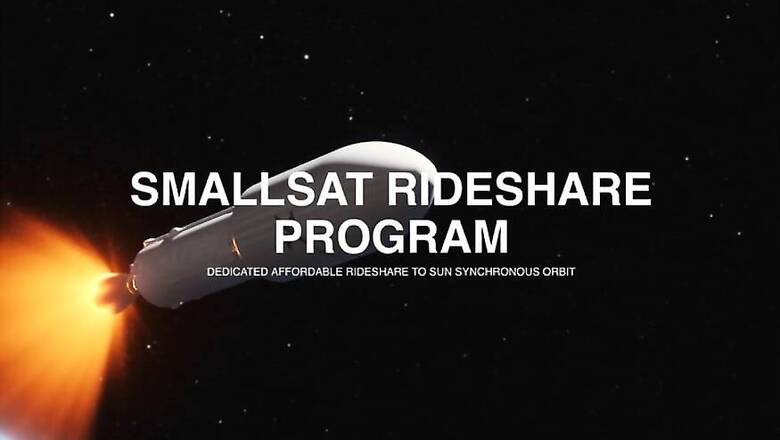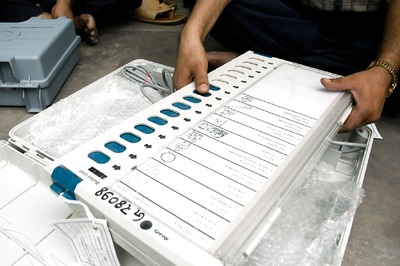
views
SpaceX has pulled off the latest successful deployment of its Starlink satellites yesterday, June 13. In typical fashion, a Falcon 9 rocket carried a payload of satellites into lower earth orbit and deployed 58 more Starlink satellites, bringing the total number of Starlink satellites in orbit up to 540. However, along with the Starlink satellites were three accompanying satellites from USA-based small scale satellite operator, Planet. The latter, which has been a SpaceX client for a while, had its satellites hitch a ride and join 15 more such satellites, which are already a part of Planet’s own SkySat satellite constellation.
While SpaceX has been flying its rockets into orbit and back for a while, and often ferrying its clients to space as well, yesterday’s launch was part of SpaceX’s new SmallSat spacecraft ride-sharing project. Announced last year, the SmallSat project is Musk’s vision of offering an affordable satellite deployment route for small scale satellite operators that serve in different industries. Planet, for instance, uses its SkySat constellation to take high resolution images of our planet, which can then be used by multiple industries for reconnaissance, weather and other tasks.
However, given that the satellite deployment process is typically expensive, small operators may have previously found it prohibitive to launch its own satellites into orbit, even if it had the resources to build the satellites in the first place. It is this that Musk’s SmallSat project aims to change, and in a bid to promote it, SpaceX even provides an Amazon-esque web portal, where interested parties can choose which orbit would they want their satellites to be deployed in (sun-synchronous, lower earth or polar), select the target launch timeline as wished (you can even choose a date from thousands of years into the future), and the approximate payload weight that your satellites would carry. SmallSat’s missions begin from $1 million, which any space mission watcher will tell you is not a lot of money. With Planet’s SkySat satellites weighing approximately 83kg each, and launching into the heliosynchronous SSO orbit, the estimate quote shown by SpaceX for the launch (with a 250kg payload) stands at $1.25 million.
Affordable space missions is one of Elon Musk’s key goals, which is what SpaceX shot to fame for. It has almost perfected the art of recapturing its Falcon 9 first stage booster stage and reusing it for missions, thereby saving itself the expense of building a new rocket for every mission – hence bringing the overall cost down for its clients as well. With the latest SmallSat launch, Musk’s affordable satellite launch plans are now firmly in motion, alongside his ambitious 12,000-satellite Starlink project. With about 4.5 percent of the target satellites deployed so far, reports state that Musk’s private beta internet trials will begin by late summer, and even public trials are expected to begin soon.
SpaceX typically deploys about 60 satellites per launch, and makes at least one trip each month. At this pace, Starlink should reach about 10 percent of its target capability within the next one year, and each SpaceX trip will also be an opportunity for satellite operators wanting a ride to space.



















Comments
0 comment